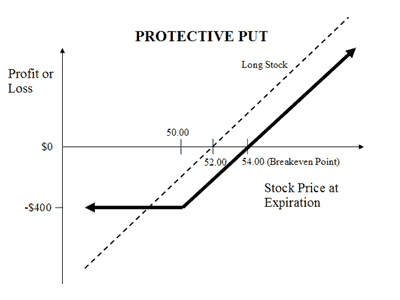Put Options to protect your stock portfolio
Post on: 8 Июнь, 2015 No Comment

Put Options to protect your stock portfolio
Put Options to protect your stock portfolio
Are you constantly worrying about fall in value of your share portfolio in case of a market fall? Here is a solution — buy put options.
Worried about the wild market swings, which cause undue harm to your portfolio? Do not despair, as there is an insurance cover available in the form of options. By buying �put options� one can safely hedge one�s portfolio against market downswings without selling one�s shares.The only price you pay is a small premium just like you do for your life insurance policies.
What are put options?
A put option is a financial instrument like a share, which you can buy and sell in the derivatives segment of the stock market. When you buy a put option, you get the right to sell a specific quantity of the underlying shares, which the put option represents (for instance, Tisco put options will represent a specific number of Tisco shares). However, you are not obliged to sell i.e. if selling the shares would result in a loss to you, you can just let the option lapse.
A put option gives you the right to sell the underlying shares at a predetermined price called the �strike price�.For instance,if you buy one Tisco put option of strike price of Rs 400, the option will give you the right to sell the one Tisco share at Rs 400.Also,a put option gives you this right for a specific period of time ranging from one month to three months.
If the price of the underlying shares rise
Let�s understand this with an example. If you have a put option to sell one share of Reliance at Rs 540 within 1 month and the price of Reliance rises to Rs 550, you simply let the put option lapse i.e. don�t sell your Reliance share.
If the price of the underlying shares fall
Similarly, if you have a put option to sell 1 share of Reliance at Rs 540 within 1 month and the price of Reliance falls to Rs 530, you can go ahead and exercise your option at Rs 540 and benefit by Rs 10.
Where does the share come from?
Since we are discussing how to hedge your portfolio in case of a fall in prices, we assume you already hold some stock. In any case, our derivatives market currently works on settlement by payment or receipt of cash and not on physical delivery of shares.
So who is obliged to buy when you sell?
The seller or writer of the put option is obliged to buy the underlying shares at the specified price if you decide to sell. In return for taking that risk, he receives the premium you have paid.
Cost of options
Buying an option comes at a cost.You need to pay a premium for purchasing the option.You also need to pay brokerage, stamp duty, service tax and Securities Transaction Tax (STT). This means that even if you decide to exercise your option, when you compute your profits, reduce these costs to know the real (net) amount that will actually come to you.
Using �puts� on a portfolio of stocks
To provide protection in the event of market decline, a put option can also be used in conjunction with a stock portfolio. Most investors hesitate to liquidate a portfolio even in uncertain market conditions, as they feel that the market will eventually move up in their favour. By buying a put option, they can protect themselves against decline in the stock price. If the market price increases, then they can just let the put option lapse. So, what is essentially lost is only the premium.
One can buy the put options on the stocks that form a part of one�s portfolio. Since most of the stocks are not a part of the F&O trading list, it would be best to buy put options on either the Nifty or the Sensex. More so, if one has a portfolio of Rs 4 lakh or more, consisting of stocks that tend to move in tandem with the broad market.The size of the options contract should mirror the size of the portion of the portfolio one is looking to hedge. Since the current minimum lot for Nifty options is 200 and the current index value is around 2100, this gives a minimum contract value of more than Rs 4 lakh. In other words, only if one is hedging a portfolio of at least Rs 4 lakh plus will this strategy work.
With �put options� one can safely hedge one�s portfolio against market downswings without selling one�s shares.
To provide protection in the event of market decline, a put option can also be used in conjunction with a stock portfolio.
Since most of the stocks are not a part of the F&O trading list, it would be best to buy put options on either the Nifty or the Sensex.














